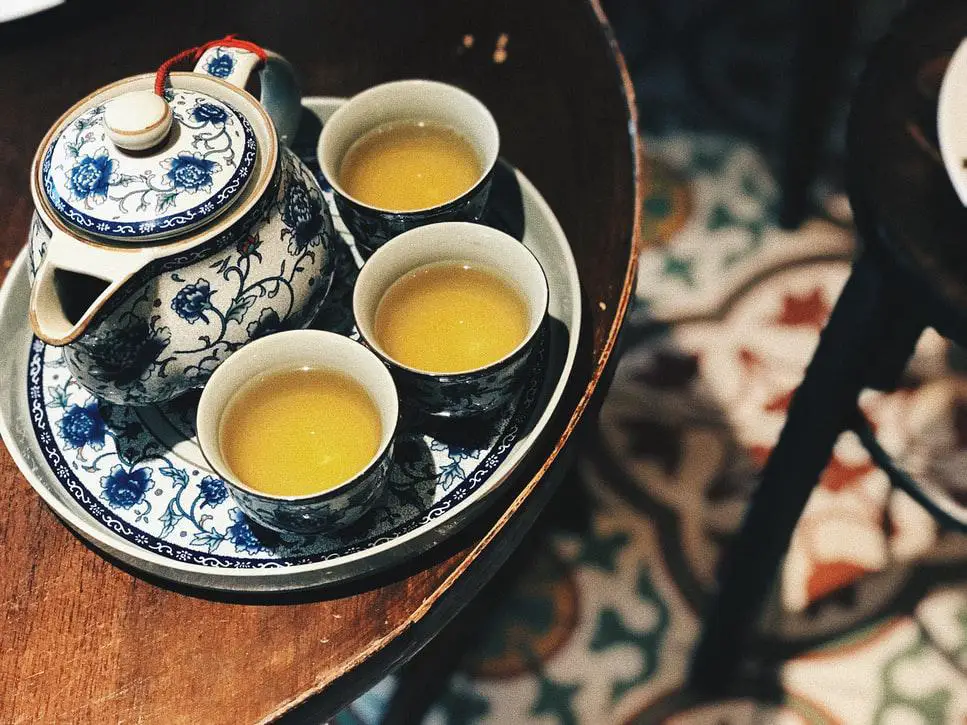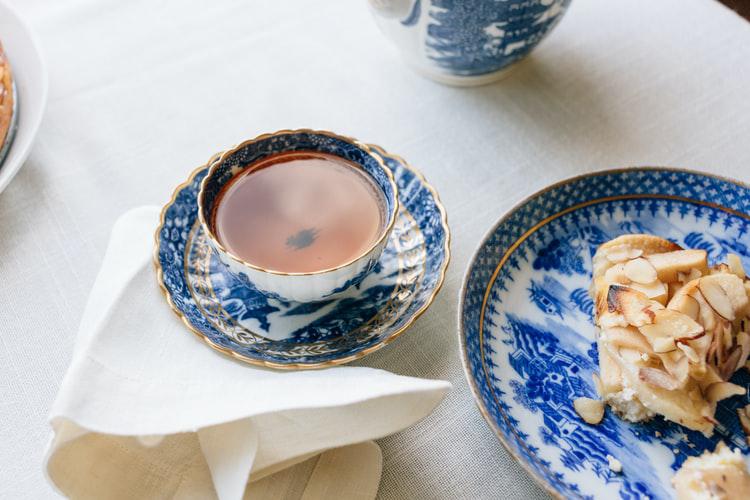The tradition of Chinese blue and white Chinese crockery has been known around the world for its intricacy and delicacy. From the time it was discovered by the western world, the Chinese art of making blue and white crockery ware has been admired and envied by everyone.
These crockery wares, also known as porcelain or Chinese porcelain, have been a part of the Chinese culture for decades. They were named after the city it was sourced from.
It was initially in the Tang dynasty that traces of all things that are blue were found for the first time. However, it was only until the Yuan Dynasty that these blue and white wares finally mastered perfection. It was In Jingdezhen, which is often known as the Chinese capital of porcelain, the mass production of transparent blue and white porcelain started.
The blue and white Chinese porcelain crockery became increasingly popular during the Qing as well as Ming dynasties. This was because all things that are blue and white was not only famous in China but started gaining importance and fame internationally, spawning imitation around Asia.
These blue and white Chinese crockeries are now very popular among people in the modern times, with them being used in vases and dinner sets.
Origin and Development
According to historians, it was in the Tang dynasty, the first Chinese blue and white wares can be traced to, although only shards have been discovered. The porcelain crockery in the Tang dynasty, especially Henan province, was said to be even more rare than the ones found in the dynasty of Song. Cobalt and blue pigments were increasingly used in crockery during the tang period.
The development of all things that are blue and white porcelain ware was traced back to early Ming period during the 20th century. Archaeologists agree that the Chinese blue and white crockery were fully developed during the mid-12th-13th centuries, especially around 1300-1320. This is still a matter of dispute as many historians are of the opinion that the early pieces go back to the Song dynasty.
The mass production of such wares is said to have started in Jingdezhen during the 14th century.
Cobalt was being exported from Persia, also known as Islamic blue at the time. The combination of white porcelain of China and cobalt from Persia led to the development of the Chinese blue and white crockery. The designs drawn on these crockeries are said to have been inspired from Islamic culture and the cobalt blue was considered a precious commodity in China whose value was twice that of gold.
Although in the 16th century, local sources of cobalt blue came to be developed, the expensive one was the Persian cobalt. While making these things that are blue and white, the porcelain body was first dried. Using a brush, the cobalt blue pigment was mixed with water and then applied. Later it was fired at high temperature after being coated with a clear glaze.
Due to porcelain’s luster, elegance and durability, blue and white porcelain came to be a part of daily life, especially in the succeeding dynasties. Even in the modern day, Jingdezhen continues to produce intrinsic blue and white crockery. It was during the time of emperor Kangxi under the Qing Dynasty, that the porcelain made at this city reached its peak and excellence.
Interesting facts about blue and white Chinese crockery
Raw materials are cheap
In modern day China, in Chinese porcelain workshops, the raw materials needed for making blue and white crockery are readily available at cheap rates. Several ingredients used in the making of these porcelain wares include alabaster, ash, bone, glass and quartz. However, the main ingredient and raw material for these crockeries is a clay mineral called kaolin. It was in the porcelain capital of China, Jingdezhen, that the name kaolin was derived – in a small village called Gaoling.
The color blue is from Cobalt Oxide
For making these delicate blue and white Chinese crockeries, the color blue is used, which is derived from cobalt oxide. This is then used to create beautiful designs on clean and white clay that has been shaped. It is then baked in a kiln at high temperatures after they have already been covered in a layer of transparent glaze.
Chinese porcelain is known popularly as China
In most other countries across the world, Chinese blue and white crockery is known as China porcelain after its origin country. As a result, porcelain is sometimes used synonymously with China.
It was over 2000 years ago that Chinese porcelain was first exported
All things that are blue and white crockery can be traced back to the Han dynasty in China when silk road routes were developed. These type of porcelain wares also quickly became popular among western countries and was exported in huge quantities from China.
For over 1000 years, porcelains can last if kept well
Authentic Chinese porcelain, made from the best ingredients like quartz and kaolin, is translucent in material and durable. Therefore, if the ingredients are mixed in the right proportions, these blue and white Chinese crockeries can last a long time.
It is time consuming to make a single porcelain piece
A lot of procedures go into making porcelain- the first process is gathering raw materials and crushing them, followed by cleaning and mixing them. They then are given shape, fired, glazed and fired for the final time again. Not only that, in addition to these procedures, other sundry operations also have to be done.
Government permission was required to supply blue and white porcelain to the royal family in ancient China
In ancient China, these beautiful blue and white crockeries were made by different small enterprises in districts as compared to mass production in today’s China. As a result, some of these workshops would be exclusively for the royal family after getting permission from the government. This was because the imperial family wanted the best quality blue and white Chinese crockeries, according to their high status in the society.

Antique China is very popular
These beautiful Chinese crockeries have been on everybody’s list, from Chinese emperors to art lovers. The original porcelain wares from China are very beautiful and exquisite looking and make for the best souvenirs for family and friends.
Emperor’s reign and dynasty was marked on porcelain wares
In ancient China, the Chinese porcelain crockeries had marks on the bottom. This included not only potter’s name but also the emperor’s dynasty and duration of his reign. This was done to differentiate between fake and authentic porcelain.
Jingdezhen is the most famous city for blue and white Chinese porcelain
In ancient China, as well as modern day China, Jingdezhen continues to be the famous porcelain capital. Also known as Jingde town, this ancient city is also called the tea capital. In 1004, the city was named Jingdezhen after Song Dynasty emperor Jingde, because this city produced the famous blue and white porcelain wares for the royals.
They can take any shape
Other than traditional vases, and both small and large wine vessels, porcelain can take any shape, including cups (with or without handles), plates, bowls and jars very easily. Not only these, teapots, lamps, brush rests, wine holders, all of these shapes are possible with blue and white porcelain wares.
Flasks that were flat and circular moon flasks were also a popular addition to authentic Chinese blue and white crockeries. Especially for vases, narrow necks, elegant curves and clean lines very common and popular, especially in ancient China.
The designs are inspired from nature and symbolic
Porcelain was produced in China to be enjoyed on symbolic, technical and aesthetic levels, the designs painted on blue and white crockeries often had meanings behind it- they were symbolic. For example, if the design had a five claws dragon superimposed on pomegranates and tangerines, the symbolism was meant to be of the royal family’s link with prosperity(tangerines) and pomegranates(fertility).
Other designs that were used for such blue and white porcelain were inspired by nature- waves, grapes, flowers, fruits and reeds. Such designs were quite commonly found on the borders of these wares. Other nature-related art like fish or birds like herons and songbirds were also used along with chickens and geese.
The chickens and geese, which were considered less elegant than herons and other birds, were common on wine cups. In addition to these, landscape and scenery was also popular. Mythical creatures of Chinese culture, especially the dragon, was extensively used, as this was a symbol of prosperity and luck.
Chinese crockeries are known for its exotic, exquisite and durable qualities with its beautiful and eye-catchy colors. The blue and white porcelain wares have become increasingly popular everywhere for the vividness and brightness of the color blue, which, in combination with fine white porcelain, looks spectacular. These are also very popular among collectors and antique enthusiasts.




